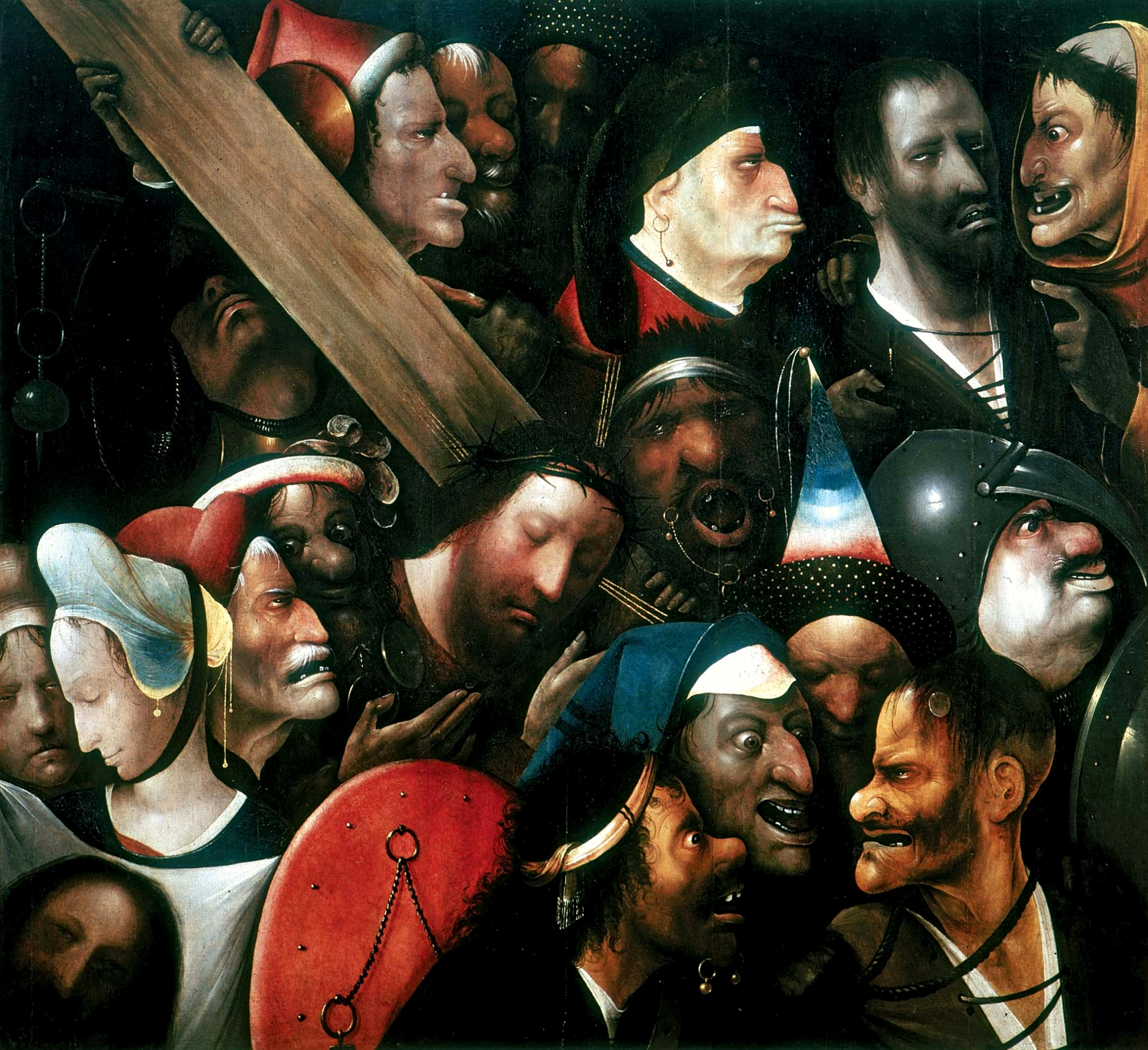Using ugliness as a visual device was popular during Bosch’s lifetime. A satirical approach to life was not unusual in the Netherlands during the fifteenth century. For example, Rederijkers (rhetorical performing groups) were installed in every Netherlandish town and largely focused on serious moralising plays that were performed in public. These plays were designed to teach an ethical or moral lesson to the viewer using sketches, comedy, and often a selection of grotesque characters. Religious morals were addressed through the use of exaggerated, ugly personae because the more horrible they were to behold, the more they egregiously drew attention and engaged their audiences. It is no surprise to see the same technique in paintings of the day, for example the grotesque faces in this painting by Bosch or more likely as the latest research attributed, one of his followers.
The face of Christ in this depiction is serene, as is that of Veronica to his right, but all around them are people jostling and mocking with faces that are contorted and foul in one way or another. The reason for this contrast is obvious: Christ as the savior of mankind is pure and therefore his face is one of calm beauty, whereas the surrounding people are a snaggletoothed, noisy, grimacing selection of characters who look as though any moment they will start a fight. Their ugliness immediately associates them with an immoral life, transmitting the clear values intrinsic to the scene in this painting.
By using these ugly characters, the painter poses a challenge: he forces us to question what we are looking at, and therefore to engage with the painting in a way that requires effort on our part. The painting acts as a mirror, reflecting back to us our worst attributes. We recognize to some degree those aspects of ourselves that we are less inclined to admit we have. We identify with the crowd more readily than with Christ, which is necessary for meaning to arise, and it’s through this exchange of looking between spectator and what the artist is showing us that we are reminded of our duty to be virtuous because, after all, who wants to be one of those faces?
- Sarah Mills


 Hieronymus Bosch's follower
Hieronymus Bosch's follower